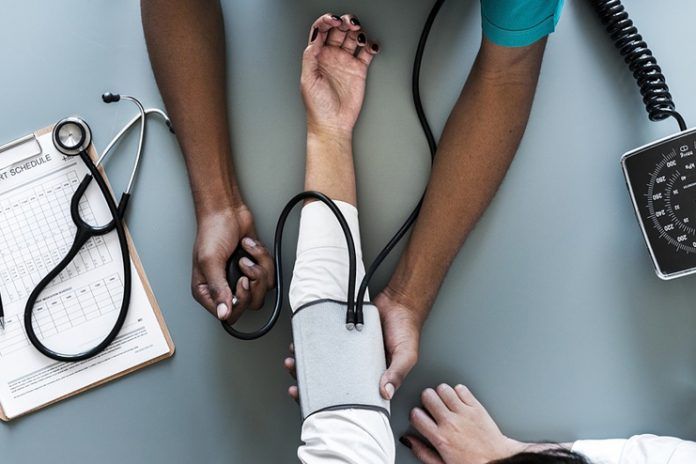Affiliate Disclaimer
Some links in this article are affiliate links. We may earn a small commission if you make a purchase through these links, at no extra cost to you. We only recommend products we find useful to our readersHave you been constantly experiencing dizzy spells or overwhelmingly hot recently? There very well could be a number of possibilities associated with this issue but high blood pressure is often one of the most common reasons behind the same.
Owing to the fact that high blood pressure signs could be contributing to a number of additive health issues, it goes without saying that it is important to pay close attention to the problem.
In this article, we are going to be walking you through some of the signs of high blood pressure and the ways in which you can combat the problem effectively.
- What is High Blood Pressure
- Types of Hypertension
- Causes of High Blood Pressure
- How to Diagnose High BP
- High Blood Pressure Readings
- Treatment for High Blood Pressure
- High Blood Pressure During Pressure
- How to Prevent Hypertension
What is High Blood Pressure?
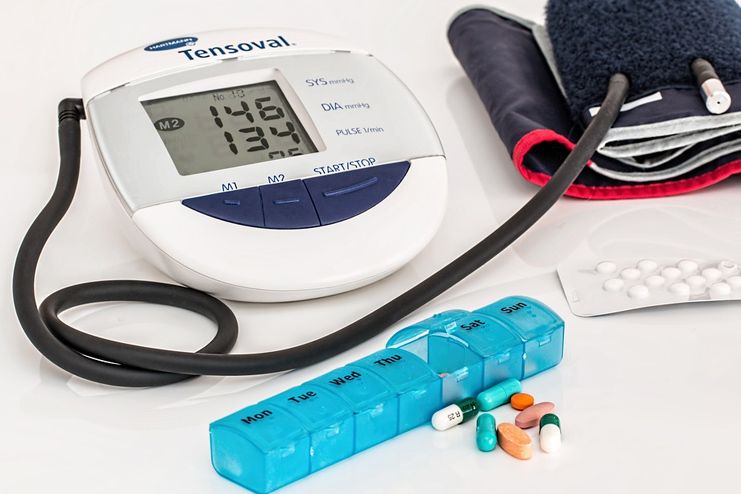
High Blood Pressure is a condition which is characterized by the unprecedented increase in the levels of blood pressure in the body.
The measure of the blood pressure in the body is significant of how much blood is passing through the vascular system in the body and if or not there are any abnormalities in the path. High blood pressure is often significant of the abnormalities in the blood vessels owing to the increased pressure exerted on the walls of the arteries and veins.
It is often the presence of the narrow arteries that ends up imposing more resistance and can increase the blood pressure altogether.
While many might often take it very lightly, the condition of high blood pressure is critical and can have adverse impacts on the overall well being of an individual.
Early detection of this condition is crucial for better regulation. If you have been experiencing high pressure levels, the doctors tend to consistently keep a watch over the pressure for the coming week to see if it is a momentary thing or something permanent.
Types of Hypertension
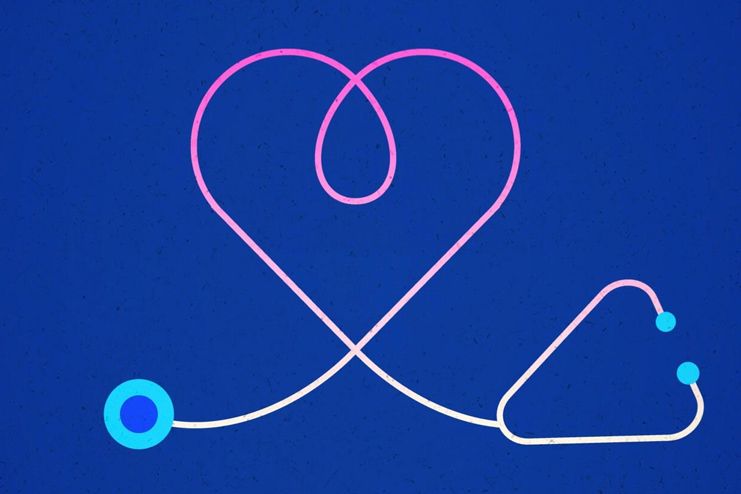
Hypertension, or high blood pressure, is categorized under 6 different types that we often don’t even have knowledge about.
On general terms, hypertension is classified into two categories – Primary and Secondary Hypertension. But, we wanted to indulge you with an elaborate understanding of the types.
Majority of the people tend to not be aware of the possible types and sub-types when it comes to hypertension. It is important to keep a check out on each of them because the mode of treatment for the same is actually different than what you would normally think it to be.
The Six Types of Hypertension Include:
- Malignant Hypertension
- Resistant Hypertension
- Pulmonary Hypertension
- Pseudo Hypertension
- White coat Hypertension
- Isolated Systolic Hypertension
Let us Take a Look at Each of Them Individually, shall we?
1. Malignant Hypertension
While many might tend to get deterred with the term “malignant” in it, it is always best suggested to ensure that you understand for a fact that hypertension itself is a silent killer.
Malignant hypertension does have very visible signs and symptoms that many of us can experience altogether.
Some of the common symptoms associated with Malignant hypertension include:
- Blurred vision
- Anxiety and constant feelings of anxiousness
- Sharp pain in the chest
- Nausea and vomiting
- Headaches
- Lack of proper urine output
- Shortness of breath
2. Resistant Hypertension
We often tend to consume medications and even make lifestyle changes in order to be able to fight off the symptoms associated with hypertension.
But, have you witnessed there to be no difference in the levels of high blood pressure? This is what we often term as resistant hypertension.
If your blood pressure isn’t budging even with all the precaution and lifestyle changes, it is mainly this type. Predominantly, what this means is the fact that your blood pressure is hard to treat and the same might also be because of some other underlying health conditions.
Some of the secondary causes behind the same include:
- Abnormalities in the hormonal levels in the body
- Clogged arteries because of the accumulation of plaque
- Obstructive sleep apnea
- Obesity
- Excess consumption of alcohol
3. Pulmonary Hypertension
Pulmonary hypertension is a matter of grave concern. The main reason behind the same is because of the fact that it can result in the induction of fatal health conditions altogether.
There are some conditions of pulmonary hypertension which are not even curable at all. The only form of mitigation is with medication which helps manage the levels of blood pressure and provide with a better quality of life.
Some of the common symptoms associated with pulmonary hypertension include:
- Shortness of breath during normal physical activities
- Chest pain
- Heart palpitations
- Pain in the upper right quadrant of the abdomen
- Decrease in the appetite
4. Pseudo Hypertension
It might sound weird because what even is “pseudo” hypertension, right?
The condition, which is often witnessed in old people predominantly, is the condition characterized by the false peaks in the levels of the blood pressure owing to non-compressibility as well as the Osler’s sign of pseudohypertension.
The main reason behind the same is because of the calcification of the blood vessels which cannot be compressed properly.
5. White Coat Hypertension
This is quite a superficial and confusing term when you do come to think of it. For the most part, this is also often known as the White coat syndrome.
In this condition, the patient suffering from this condition tend to have a normal blood pressure when the readings are taken at home but the same elevates when they are conducting the tests in a doctor’s chamber.
6. Isolated Systolic Hypertension
The last but not the least in the list is isolated systolic hypertension. In such conditions, the patients consistently have high levels of systolic pressure while their diastolic pressure remains normal.
Experiencing an abnormal diastolic pressure is often not that prevalent and common. It is just important to ensure that you don’t end up experiencing it and not take precautions for the same.
Experts do suggest seeking immediate medical attention for such conditions to avoid any further problems whatsoever.
What Causes High Blood Pressure?

For the most part, it is often the lifestyle that we lead is responsible for the high blood pressure symptoms.
If you still have been skeptical and need a bigger picture about the same, we do have some important insights to share with you.
Let us start by discussing the causes behind Primary Hypertension.
Also often known as the Essential Hypertension, this is the condition which progresses over the course of time with no distinct and identifiable causes behind the same. Majority of the patients suffering from the symptoms of high blood pressure suffer from this variant.
So, what are some of the possible causes behind the same?
1. Genetic variations
The very common and one of the most predominant high blood pressure causes is because of the genetic variations that we often predispose from our parents itself.
Hereditary is what you can call this specific condition. Any form of genetic mutations and abnormalities could be a potent reason behind the induction of the primary hypertension.
Stress
It goes without saying that stress and anxiety does have one of the most predominant impacts on the high blood pressure condition altogether.
Several conducted studies (R) have pointed out the links between the high levels of cortisol in the blood stream with the induction of hypertension.
2. Environmental Factors
Yet another one of the common factors that does influence the overall prospect of hypertension is the environmental factors and the overall lifestyle that we do lead. It is always best suggested to check for the lifestyle and diet habits you have and then decide if or not the same could be a possible contributing factor for the same.
3. Obesity
Many people don’t realize this but the rampant weight gain (R) is one of the most common reasons behind the signs of high blood pressure.
It is believed that the accumulation of unprecedented amount of fat in the body is often indicative of the hampered metabolism and overall seamless blood flow which is what has been reported to be one of the common reasons behind the induction of this condition.
Some of the common causes behind the Secondary Hypertension include:
- Issues and improper functioning of the kidney because of underlying reasons
- Congenital heart disease
- Obstructive sleep apnea
- Improper functioning of the thyroid gland
- Substance use, especially high dosage of drugs
- Alcohol abuse
- Endocrine tumours
What Are The Symptoms Of Hypertension?

Hypertension is very visible because of the kind of symptoms that often do surface. It goes without saying that it is very important to take every single one of the symptom seriously and seek medical help to get rid of the condition effectively.
The alarming thing about this is the fact that the symptoms are not necessarily very evident right off the bat. It does take quite some time for it to reach to a level of seriousness following which you experience them effectively.
Majority of the people who do experience the symptoms tend to often associate the problem with some other health issue. Although, if you are experiencing any of the signs and symptoms that we are about to mention, it is always best suggested to consult a doctor for the same.
The symptoms include:
- Hot flushing
- Headaches
- Shortness of breath and difficulty in breathing
- Nosebleeds
- Dizziness
- Chest pain
- Blurred vision
- Spotting blood in the urine
How To Diagnose High Blood Pressure?
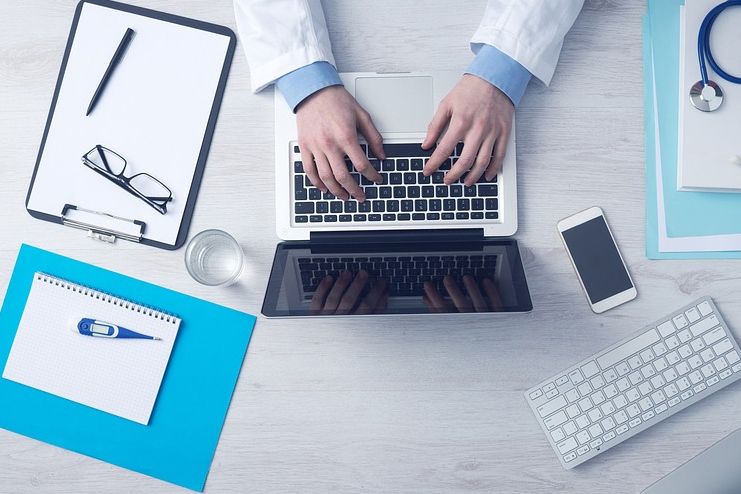
As mentioned before, early detection of the high blood pressure and the signs and symptoms is very important for timely regulation of the condition.
The major reason why this gets out of hand is because of the fact that the condition is often detected at a very later stage.
Majority of the times when you visit a doctor for a regular check up, the very first vital that they do check is the blood pressure.
Diagnosing this problem stems from regular and timely checkups of the blood pressure which is measure using a sphygmomanometer.
The doctor places the inflatable part of the device over your arm and places the stethoscope underneath to be able to take proper readings.
Having temporary blood pressure spikes are normal. The problem arises when the condition doesn’t remain temporary anymore and does end up being a permanent prospect.
If the doctor does think you have the possibility of being a high blood pressure patient, they will ask you to come in for regular checking of the same to record the levels for further understanding.
Alternatively, if the doctor finds that you are suffering from resistant hypertension, they might end up suggesting a few more tests to be conducted to get a better perspective about any underlying condition that could be affecting this altogether.
Some of the accessory symptoms include:
- Urine test
- Electrocardiogram
- Ultrasound of the heart and kidneys
- Cholesterol screening and lipid profile testing
It is very important to get each of the screenings done as suggested by the doctor to cross check any kind of possibilities that many could be suffering from unknowingly.
How to Understand The High Blood Pressure Readings?
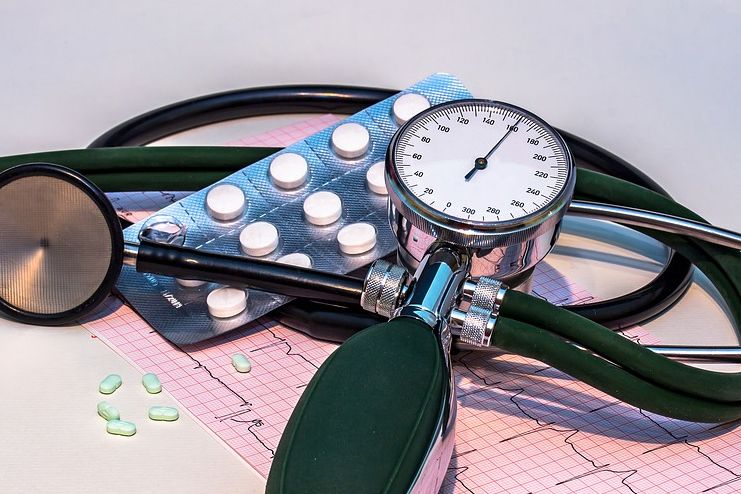
Talking in medical terminologies is not that easy to be decoded and understood by every single person.
In order for you to have a basic idea, we are going to be breaking it down into simple terms.
The readings of 120/80 that we often see the doctor recite to us are indicative of two blood pressure readings in our body.
They include:
- Systolic pressure
- Diastolic pressure
Systolic pressure is the upper reading and signifies the pressure exerted in your arteries when the heart beats and pumps the blood out.
Diastolic pressure is the lower reading and signifies the pressure in your arteries in between the heart beats.
Altered diastolic pressure is often believed to be of something more concern in comparison to the elevated levels of the systolic pressure.
So, when it comes to the blood pressure readings, how do we classify them?
Healthy Elevated Stage – 1 Stage – 2 Hypertensive crisis
| Healthy | Elevated | Stage – 1 | Stage – 2 | Hypertensive crisis |
|
Reading of 120/80 mm of Hg is considered normal and healthy |
Systolic pressure ranging between 120-129 mm of Hg and the Diastolic pressure at less than 80 mm Hg |
Systolic pressure ranging between 130-139 mm of Hg while the Diastolic pressure between 80-89 mm of Hg |
Systolic pressure more than 140 mm of Hg while the Diastolic pressure between 80-90 mm of Hg |
Systolic pressure more than 180 mm of Hg while the Diastolic pressure over 120 mm of Hg
|
Treatment for High Blood Pressure

Given the fact that there are predominantly two variants of hypertension, the approach to treatment is also quite varying depending on the same.
Because of the fact that the causes behind the high blood pressure is often hard to detect, it is not surprising that it does become hard to suggest proper treatment for primary hypertension right off the bat.
Majority of the doctors tend to suggest making lifestyle changes and start opting for a healthy diet that would be helpful in combating the signs and symptoms associated with high blood pressure. If the doctor finds that the administered lifestyle changes aren’t panning out to be effective, they’ll switch to medications.
For secondary hypertension, the approach for the high blood pressure treatment is a bit different. Owing to the fact that the elevated levels of blood pressure is because of some other accessory reason, the first step to the treatment is to opt for better ways to find the root cause.
In order to treat the condition, the doctors do tend to find treatments for the underlying health condition that is causing the problem in the first place. This does help in proper management of the problem and positively brings down the levels of hypertension too.
High Blood Pressure During Pregnancy

The condition of hypertension during pregnancy is actually quite common but with the correct regulatory factors, the problems can be dealt with.
Majority of the mothers with hypertension (R) do deliver healthy babies, given the fact that they have their levels checked and managed accordingly.
Studies (R) have shown that the elevated levels of the blood pressure during the pregnancy term could be potent risk in the development of problems in the newborn child.
Being underweight or even be born with a few complications is what is often seen to be the consequences in this specific regard altogether.
Often times, some women tend to develop the condition of hypertension during the term of pregnancy which is back to normal once the baby is born. It is thus very important to consult a doctor for the same to get a better approach to the regulation of the condition during and after the pregnancy as well.
Hypertension, Pregnancy And Preeclampsia
Preeclampsia is a condition which is characterized by the condition of development of high blood pressure in women during pregnancy.
Would be mothers who tend to suffer from this condition of preeclampsia also tend to showcase high levels of protein in their urine as well. It was priorly known as toxemia.
It is very important to ensure that you consult your doctor for the same to be able to understand the condition better and approach a better mode of treatment.
How to Prevent High Blood Pressure?

Prevention methods for high blood pressure are very important. It does go without saying that elevated levels of blood pressure don’t do any kind of good to your body.
If you have been on the lookout for some effective preventive tips for this condition, some of them include:
1. Maintaining a healthy lifestyle

Your lifestyle and even your food habits and diet do play a very crucial role in the overall condition of high blood pressure.
Owing to the fact that obesity is a potent problem altogether for the further elevation of the blood pressure levels, it is always best suggested to maintain a healthy lifestyle that could impact one’s overall physical well being in check.
Eating seven servings of fruits and vegetables is actually believed to have positive impacts in treating the symptoms of high blood pressure effectively.
2. Manage stress

Given the fact that the overall levels of cortisol in the body is often associated with the impending stress, it is important to manage those levels effectively in order to be successfully able to prevent any kind of unwanted spikes in the blood pressure levels in the body.
3. Lose weight

If you are someone suffering from high blood pressure and you are obese, chances are that the condition of fat accumulation in the body can effectively impact the overall weight loss journey.
Obesity is often considered as one of the most common issues and causes associated with high blood pressure. Given the fact that heightened fat storage in the body does have the potency to disrupt the normal blood flow and even hamper normal functioning of the arteries and other blood vessels in the body.
4. Keep a Close Look at the Blood Pressure
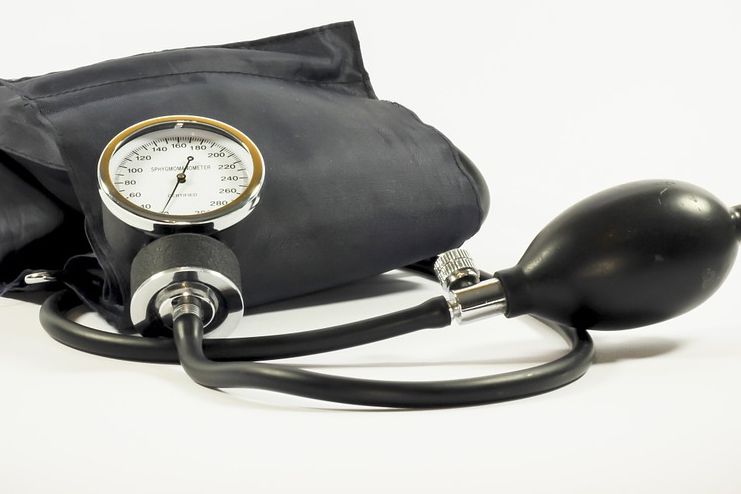
Last but not least in the list is to ensure that you keep a close eye on the blood pressure levels on a regular basis. It is actually very important to get the pressure checked every other week to keep a close eye on whether or not the medications are working and effective or not.
Summarizing it all, high blood pressure can turn out to be very fatal for the body functioning, if not regulated before it’s too late. Opt for a healthier lifestyle and an overall active life to be able to keep everything in check without much of a hassle.
In this Article













